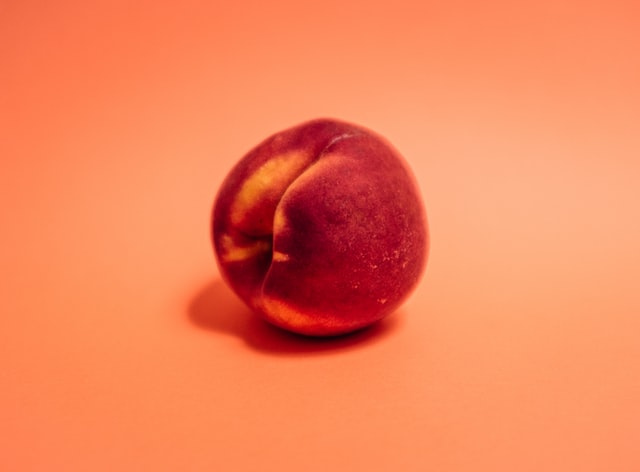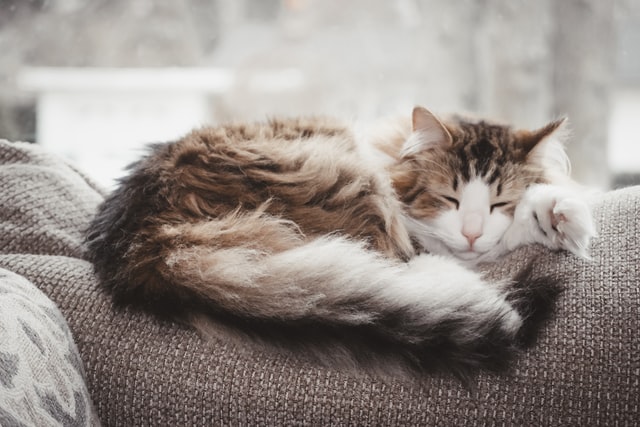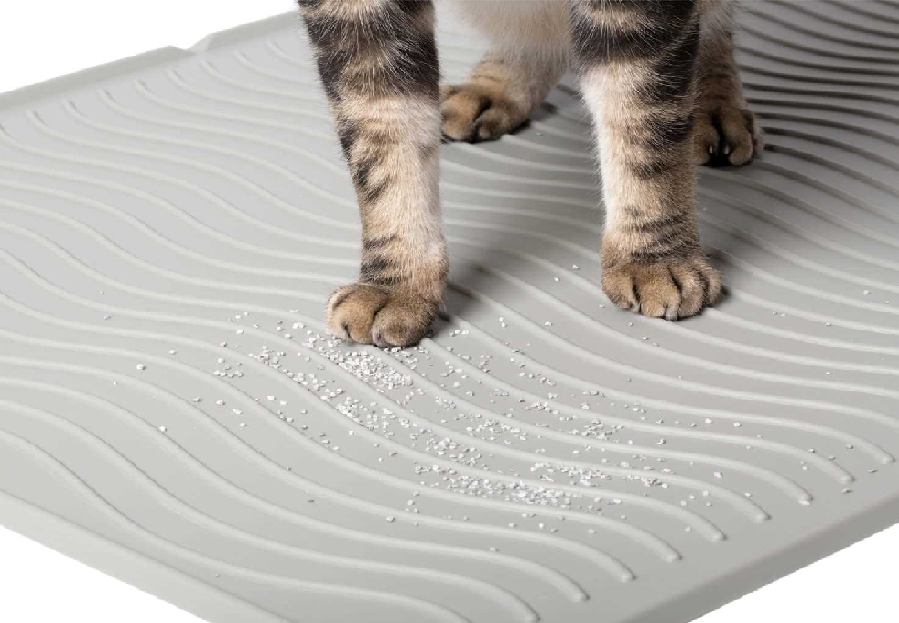This guide looks at the best cat shampoos currently available.
At first, it may seem that choosing the right product is simply a matter of “what do I want my cat to smell of?”
However, there are a few factors to be taken into account, especially if your cat has fleas, skin issues (dandruff, sensitivity or itchy skin) or isn’t too keen on getting a soaking.
What You Will Discover
- The best shampoos currently available for cats to cover a range of needs
- How to bathe your cat
- Chemicals to avoid
Before delving into what’s available, there’s a question that needs answering…
Do Cats Need Baths?
The answer to this is ‘maybe.’
Cats do groom and lick themselves often and are considered ‘clean’ animals. Add an aversion to water, and in most cases, it’s best to leave them well alone.
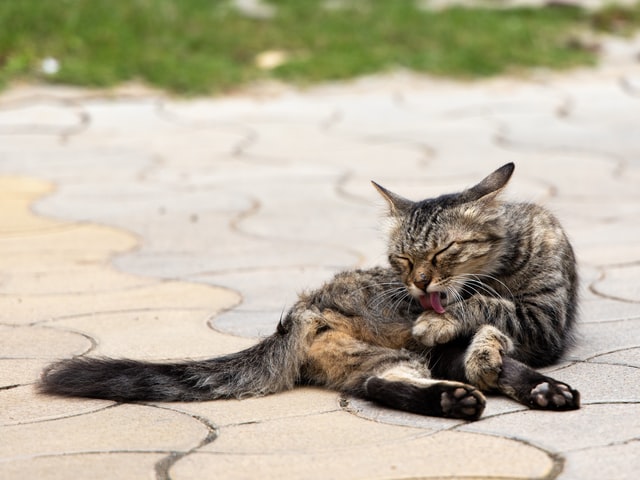
In reality then, most reasons to bathe a cat come from a human perspective– to get rid of unwanted smells, improve appearance or to prevent the spread of dirt and fur around the house.
Allergy sufferers may also find bathing their cat eases symptoms for a brief period afterwards.
There may be valid reasons that do benefit your cat– for example shampooing to remove fleas or treat a particular condition, or if their fur has come into contact with potentially harmful chemicals.
Also long-haired breeds will need a regular wash as their fur easily picks up dirt which is harder to remove and is prone to tangling.
So what are the different types of cat shampoo?
Types of Cat Shampoo (or The Different Ways You Can Wash Your Cat)
This subject was very new to me, and whilst researching it, I discovered multiple ways in which a cat can actually be washed- some of which don’t even use water…
- Generic Cat Shampoos: Pretty self-explanatory. These are designed for use on cats and are therefore not toxic to them. Some may also contain conditioners. Wet, lather, rinse. Easy. Or so it sounds…
- Medicinal Cat Shampoos: Work as above except these are for specific medical conditions or to remove say fleas.
- Waterless Cat Shampoos: Who knew? Waterless shampoo comes in the form of sprays, and even powders and just need to be rubbed into your cat’s fur. No need to bathe your cat as no water is needed, which will be hugely beneficial for cats who hate water, and their owners who hate being scratched…
- Wipes: For those that don’t like shampoos, water and sprays. Particularly good for a cat that needs a quick clean for whatever reason. Wipes can also help remove excess fur and dander.
The key things to ask yourself are “does my cat really need to be bathed?” and if so, “is this shampoo safe to use on my cat?”
How I did My Research or ‘Method‘
Before getting into the list of best cat shampoos, just a little on how I’ve gone about selecting them.
I’ve only looked at products rated 4 stars and above with the most reviews (the ‘wisdom of the crowd‘ theory).
I’ve used Amazon as the standard as this usually provides the most reviews and greater range of products.
However, if the same item is available from other well-known retailers, I’ve linked to these too.
Summarised are key features listed by the seller or manufacturer- but it doesn’t necessarily mean they’re entirely accurate of course. I’ve also added a few notes of my own.
The Best Cat Shampoos: Regular Shampoo
TropiClean Deep Cleansing Shampoo

4.6/5 from 25,152 ratings
Description
- Moisturises and conditions your pet’s skin and coat
- Scent of sweet and fruity berries
- Made with naturally-occurring raw materials or those that are adapted from naturally-occurring plant or mineral based raw materials
- Soap, paraben and dye free
- Suitable for cats 12 weeks and older
- 20 fl oz (592 ml) bottle
- Made in the USA
Notes: Also available in larger volumes of 1 gallon (4.5 litres) and 2.5 gallons (11.4 litres).
The Best Cat Shampoos: Waterless Shampoo
Wahl Pet Friendly Waterless No Rinse Shampoo
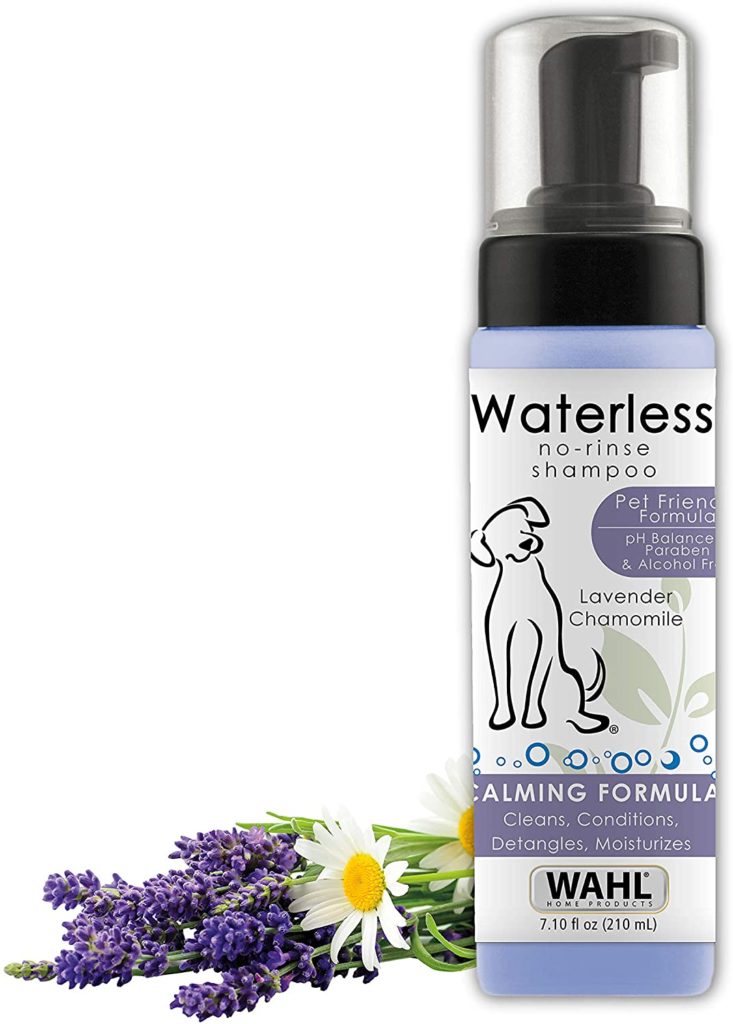
4.5/5 from 10,203 ratings
Description
- Plant derived lavender & chamomile is pH balanced, alcohol free, paraben free, PEG-80 free
- No rinsing necessary- simply dry with a towel & brush coat
- For cleansing, conditioning, detangling, & moisturising with a ‘calming’ formula
- Safe usage instructions – although a hypoallergenic formula, it’s advised you test a small amount on your pet first and dry thoroughly to make sure your pet tolerates the cleansing agents
- 7.1 fl oz (210 ml) bottle
- Suitable for cats, dogs and horses
- Brand used by professional vets and groomers for over 50 years
- Made in the USA
Notes: If you’ve got a dog and horse, you can give those a wash too. Also available in coconut and lime.
The Best Cat Shampoos: Shampoos For Specific Needs & Medicinal Shampoos *
*always a good idea to consult a vet if you’re unsure about what to do/use.
Best Cat Shampoo For Sensitive Skin: Organic 5 in 1 Oatmeal Shampoo & Conditioner
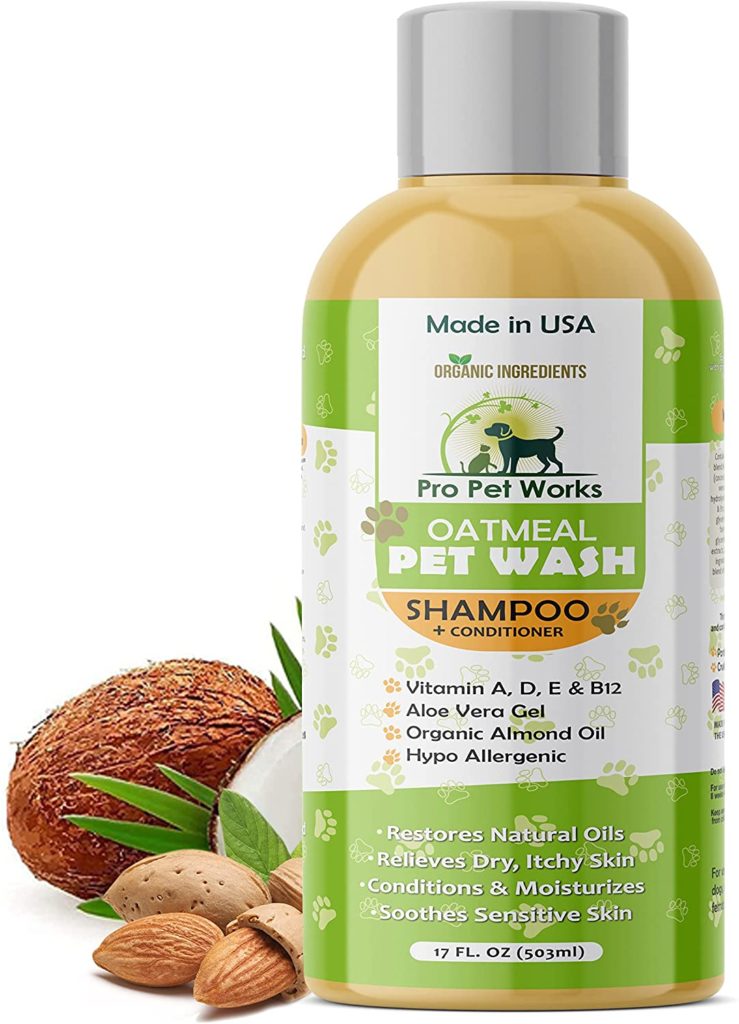
4.6/5 from 12,039 ratings
Description
- Ingredients include Aloe Vera Gel, Organic Almond Oil, Oatmeal, and Vitamins A, D, E, and B12 which work together to relieve skin issues and treat your dry skin by keeping it hydrated
- Safe for pets with sensitive skin and offers relief from hot spots and itching
- Works as a detangler to detangle hair for easy brushing
- Safe for daily use
- Formulation is paraben-free, cruelty-free, sulfate-free, alcohol-free, and soap-free
- Suitable for use on dogs, cats/kittens, rabbits, guinea pigs or ferrets
- Preserves the natural oil production of your pet
- Can also be used for deshedding puposes
- Helps keep skin cells healthy, retain moisture and protects against UV damage
- 17 fl oz/503 ml bottle
- Made in the USA
Notes: Oatmeal has traditionally been used to soothe skin irritation (in humans at least). This multi-functional pet shampoo and conditioner can also be bought in a huge 128 ounce (3637 ml) bottle.
The Best Cat Antifungal/Antibacterial Shampoo: Veterinary Formula Clinical Care Antiseptic and Antifungal Shampoo

4.5/5 from 27,454 ratings
Description
- Scientifically formulated with benzethonium chloride (antibacterial) and ketoconazole (antifungal) to relieve bacterial & yeast infections
- Helps relieve symptoms including redness, malodorous discharge from lesions, itchiness, pustules, hair loss, greasiness and scaly skin caused by wounds, endocrine diseases, allergies, short coats, skin folds or ringworm
- pH balanced and paraben and soap-free
- Does not remove topical spot-on flea and tick treatments and has been proven to safely treat Bacterial Pyoderma and allergic/fungal dermatitis
- Suitable for dogs and cats over 12 weeks of age
- Recommended use- twice weekly until skin conditions clear up, then once a week to prevent flare-ups
- Age range description: Adolescent
Notes: This is the 16 fl oz/473 ml bottle but also available as an 8 fl oz/237 ml spray. Can also be bought in a spray or shampoo/spray bundle.
Best Cat Shampoo For Fleas and Ticks: Adams Plus Flea & Tick Shampoo

4.5/5 from 14,142 ratings
Description
- Provides flea treatment, killing adult fleas and flea eggs on your dog or cat to prevent reinfestation for up to 28 days
- Kills ticks and lice on contact
- Formulated with soothing aloe vera, lanolin, coconut extract, and oatmeal for pets with sensitive skin
- Leaves your pet’s coat soft, shiny and manageable
- Lightly scented fragrance
- Use about 1⅓ tablespoons for every 5 lbs (2.2 kgs approx.) of pet’s weight
Notes: Looks like a bottle of bleach but seems to be an effective flea, tick and lice remover. There’s also a version that comes with an anti-flea and tick collar, albeit geared towards dogs. Additional products by this brand to remove fleas from the home and yard.
Best Cat Shampoo For Dandruff And Dander: Organic 5 in 1 Oatmeal Shampoo & Conditioner
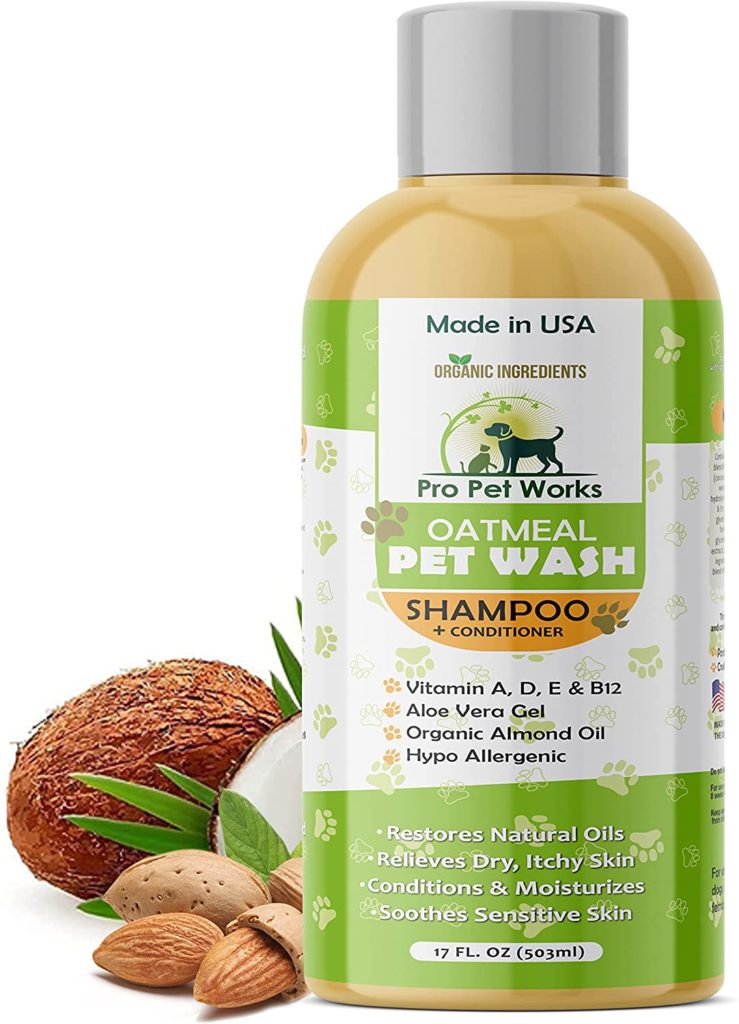
4.6/5 from 12,039
Description
- Ingredients include aloe vera gel, organic almond oil, oatmeal, and vitamins A, D, E, and B12 which work together to relieve skin issues and treat your dry skin by keeping it hydrated
- Safe for pets with sensitive skin and offers relief from hot spots and itching
- Works as a detangler to detangle hair for easy brushing
- Safe for daily use
- Formulation is paraben-free, cruelty-free, sulfate-free, alcohol-free, and soap-free
- Suitable for use on dogs, cats/kittens, rabbits, guinea pigs, or ferrets
- Preserves the natural oil production of your pet
- Can also be used for deshedding puposes
- Helps keep skin cells healthy, retain moisture and protects against UV damage
- 17 fl oz/503 ml bottle
- Made in the USA
Notes: This particular brand’s second appearance in this list, which makes it a good all rounder.
The Best Cat Shampoo For Long Haired Cats and Deshedding
TropiClean Lime & Coconut Shed Control Shampoo
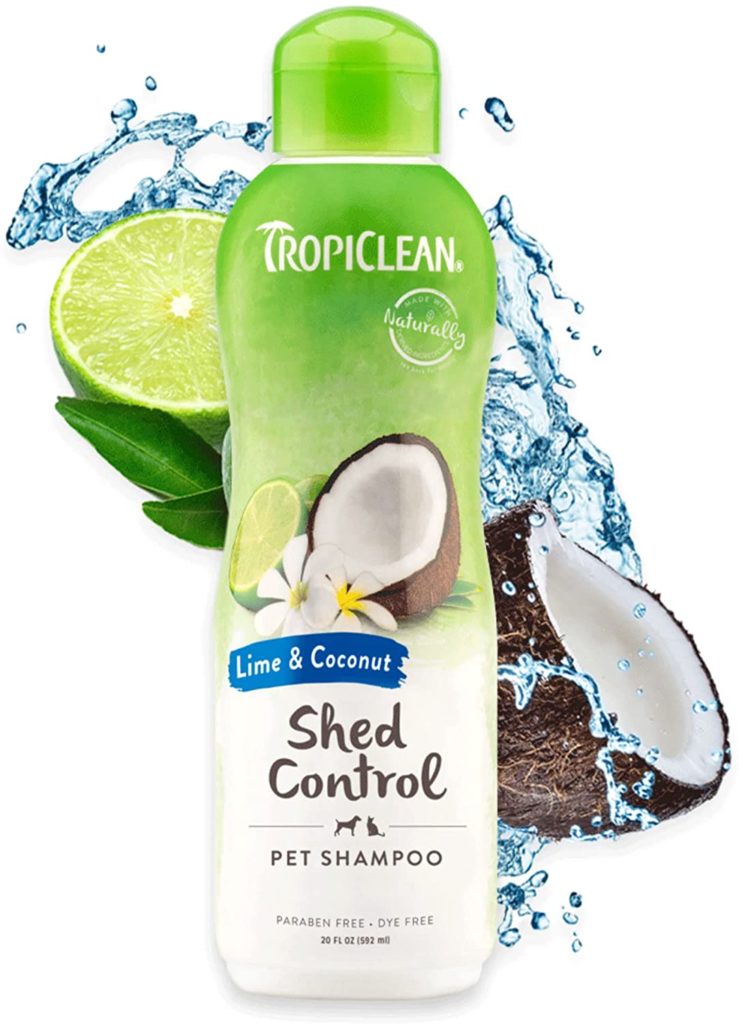
4.6/5 from 25,228 ratings
Description
- Exfoliates and moisturises your pet’s skin to reduce shedding and provide a deep nourishing clean
- Lime and coconut leaf scent
- Soap free, paraben free and dye free
- Made with naturally-occurring raw materials or those that are adapted from naturally-occurring plant or mineral based raw materials
- Suitable for dogs and cats 12 weeks and older
- 20 fl oz/592 ml bottle
- Made in the USA
Notes: Another offering from the Tropiclean range that’s aimed at controlling shedding. Also available in larger 1 gallon (4.5 litre) and 2 gallon (9 litre) bottles. For best results, the manufacturer recommends this product is used in conjucntion with the TropiClean Lime & Cocoa Butter Shed Control Conditioner. But they would say that…
The Best 2 In 1 Cat Shampoo and Conditioner
TropiClean Papaya & Coconut Luxury 2-in-1 Shampoo and Conditioner
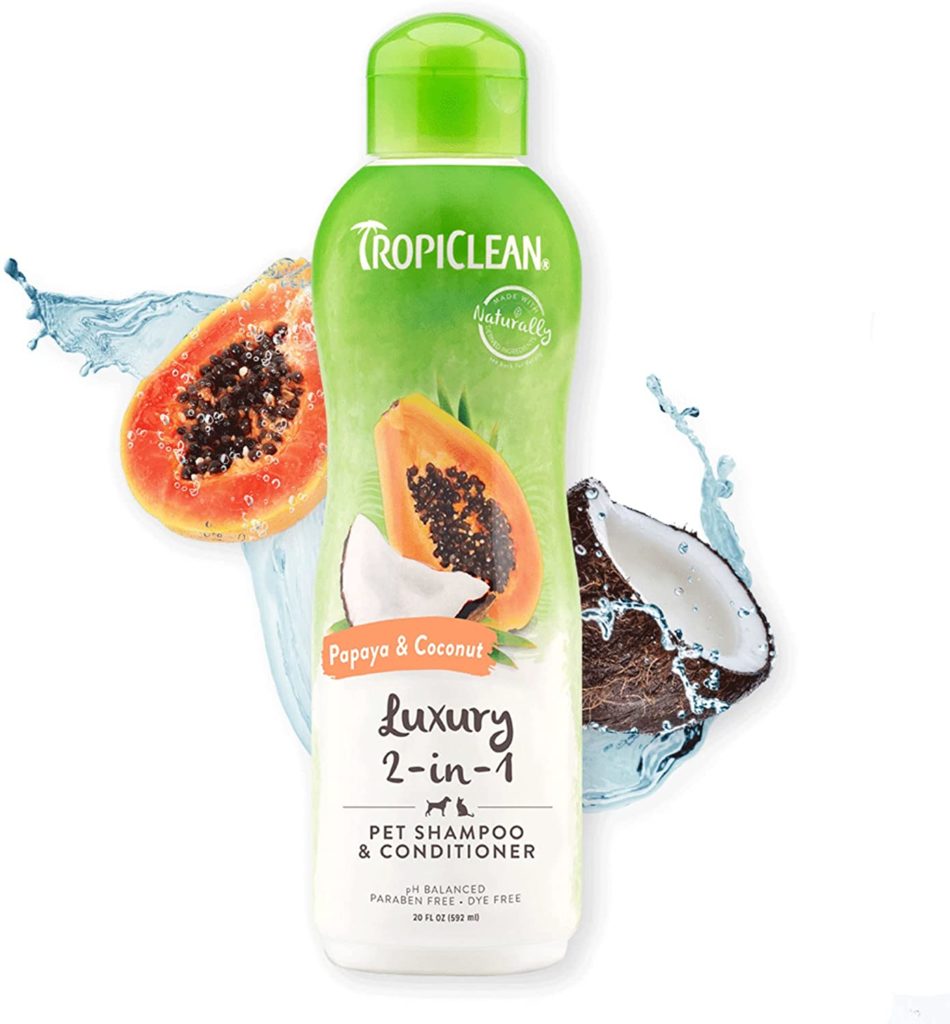
4.5/5 from 25,228
Description
- Cleanses, moisturises and conditions your pet’s skin and coat to help relax tangled hair for easier brushing, leaving their coat soft and healthy
- Papaya and coconut scent
- pH balanced, soap free, paraben free and dye free
- Suitable for dogs and cats 12 weeks or older
- Made from naturally-occurring raw materials or those that are adapted from naturally-occurring plant or mineral based raw materials
- 20 fl oz/592 ml bottle
- Made in the USA
Notes: Yes, it’s Tropiclean again. This offering comes in a range of volumes up to 2.5 gallons (11.3 litres) for massive cats or the particularly unclean, presumably.
The Best Grooming Wipes For Cats
Burt’s Bees Natural Dander Reducing Wipes For Cats
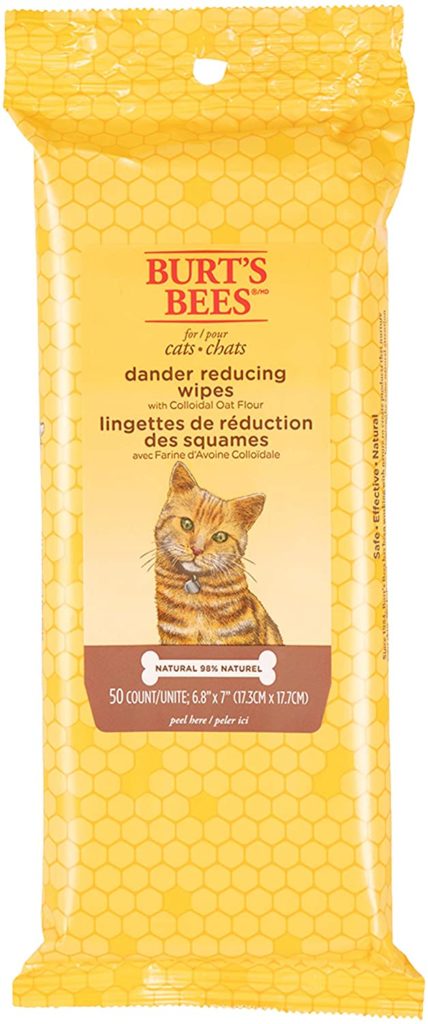
4.5/5 from 11,617 ratings
Description
- Moisturise and deeply condition your cat or kitten’s dry skin to reduce redness and flakes
- All natural ingredients include oatmeal which soothes skin to help reduce inflammation
- pH balanced
- Veterinarian recommended formula free of fragrances, sulfates, colourants and harsh chemicals
Notes: An alternative to traditional shampoos and waterless sprays. Available in packs containing 50 up to 300 wipes.
The Shampoo We Used
‘We’ did get to a point where ‘we’ felt Hazel needed a bath (it was my girlfriend really- I wasn’t that fussed or perhaps my nose just wasn’t as sensitive).
After a trip to our local Pets At Home, we purchased the Animology Feline Great Cat Shampoo.

You can read about how we got on with it here.
Cats generally dislike being in water (this also applies to my Bengal and she’s supposed to have an affinity for the stuff).
Feline hydrophobia then, can make bathing a harrowing experience for both you and your pet.
However, the following tips can make the experience that little bit easier…
Can I Use Human Shampoo On A Cat?
No.
It’s best to avoid using human shampoo.
This is because some contain chemicals that can be harmful to cats (see section ‘Substances and Chemicals To Avoid’).
Humans don’t ingest shampoo (or at least shouldn’t…) but cats can by inadvertently licking themselves after being washed (even though most shampoo should be rinsed off).
I’ve read that some baby shampoos can be used in small amounts, although I’m not sure whether all or just some brands are suitable so it could be safer to stick to those made for cats.
Plus there no local babies I can borrow some from to test this theory.
Is It OK To Use Dog Shampoo On A Cat?
There may be shampoos suitable for both- these should state so on the label.
However, as with human shampoos, those specifically formulated for dogs should NOT be used on cats.
Why? Well again it comes down to ingredients and what may not be harmful to a dog could well be to a cat.
How To Bathe A Cat: Rinse-Off Cat Shampoos
Firstly, it’s always a good idea to follow instructions on the bottle, particularly for medicinal shampoos.
Many of those that made the ‘best cat shampoos’ list could also be diluted so that’s worth bearing in mind also.
What You’ll Need
· Shampoo/Diluted shampoo
· Wash basin, bathtub or large bowl
· A large towel
Also, you may want to use these items:
· A jug, watering can or showerhead for rinsing
· A non-slip mat in or lining the bathing area for your cat to grip onto
· Another person to help and/or speed things up
· Hair/blow dryer for cats with longer fur (if the noise doesn’t spook them)
· A clean wet cloth if you want to wash your cat’s face
· Gloves to protect your hand from scratches
What To Do
Firstly, it’s a good idea to brush your cat to remove fur that’s been shed plus any loose debris or dirt. This is particularly beneficial if your cat has long hair.
Avoid getting water and shampoo in your cat’s eyes, ears and mouth.
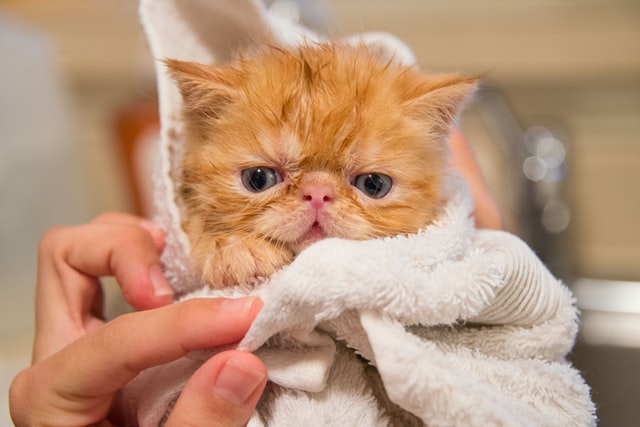
- Clear the area of any objects that could harm a frightened/struggling cat or could be broken.
- Fill the basin or tub with a little tepid/lukewarm water- up to 3 inches or so (7.5cm).
- Next, place your mat and towel into the basin or tub- this is to provide your cat with some grip.
- Carefully lower your cat into the water.
- Gently apply water to your cat’s body. Work from the neck/shoulders down to the tail- i.e. the direction you would stroke your cat. I don’t know why this is- perhaps it’s the stroking motion that cats are familiar with.
- Apply the shampoo.
- Rinse thoroughly with water (using the same, initial method of application) and remove all shampoo.
- Use the wet cloth to wash your cats face if required.
- If you’ve both survived the ordeal, place your cat onto a towel and begin the drying process. You could use a hair/blow dryer here on its lowest/safe setting if kitty allows of course.
- Job done. Nurse any scratch wounds…
You may find your cat just won’t tolerate the procedure in which case you could try and build up some tolerance by allowing it to slowly get used to being in shallow water, the scent of the shampoo etc. or failing that, try a waterless shampoo or wipe…
How To Bathe A Cat: Waterless Shampoos
As always, read the manufacturer’s instructions, but the general idea is that you simply wipe, rub or spray these onto your cat without a need to pre-wet or rinse with water afterwards.
Clearly there’s an advantage with these products in terms of saving time but the main plus is their use with cats that will just not tolerate water.
Again though, it’s a case of ensuring that the product you are using is suitable for cats…
Substances And Chemicals To Avoid
There are many chemicals you will have seen mentioned in the descriptions as not being present in the particular brand, so I thought it would be a good idea to mention some of these below:
Parabens: are a family of chemicals commonly used in cosmetics. They disrupt the normal functioning of hormones (the article here relates to food, but is relevant in terms of ingesting shampoos containing parabens for example).
Phthalates: are found in a range of products including plastics and personal care items like shampoos. They can affect hormones and impair the development of animal reproductive systems.
PEGs: Polyethylene glycols are derived from petroleum and are actually used to treat constipation in cats.
SLS: Sodium lauryl sulfate is a common foaming agent that traps oil and dirt. It has been associated with skin irritation in humans.
SLES: Sodium laureth sulfate/sodium lauryl ether sulfate is another foaming agent derived from SLS. There are claims that it is potentially carcinogenic, but this is disputed.
Essential Oils
These are always being promoted in the (human) personal care industry for their beneficial effects.
However, did you know that many are toxic to cats? I didn’t.
The People’s Dispensary For Sick Animals (PDSA) lists the following as those you should be particularly aware of:
- Tea tree
- Peppermint
- Citrus oils
- Ylang ylang
- Lavender
- Wintergreen
- Sweet birch
- Pine
- Eucalyptus
- Cinnamon
- Clove
Potential effects could include skin irritation, organ damage, seizures and even death.
Some products labelled as a ‘Pet Shampoo’ may contain one or more of the above so again, ensure it is specifically formulated for cats.
What’s A Good Recipe For A Homemade Shampoo For Cats?
There are plenty of homemade recipes to try- most use a combination of the following- oats, cider vinegar, baking soda and a weak or diluted dish soap.
You can even make your own dry version.
This site has a recipe for both.
Summary
On reflection, this article may have made the idea of choosing the best cat shampoo and giving your cat some kind of bath more difficult than it sounds.
But it shouldn’t be too tricky.
Firstly, be sure your cat actually does need to be cleaned.
Pick a shampoo specifically designed for cats (not just a ‘Pet Shampoo’- unless it mentions it is safe to use) that does not contain essential oils or the other potentially harmful substances listed.
Consult your vet if your cat’s need is medicinal– for example, if it has sensitive skin.
If you know your cat hates water, try a waterless alternative. If you don’t know whether your cat hates water, follow the simple method outlined in the section above.
Then if you find your cat hates water, try a waterless alternative or wipes. Or just put up with the smell…
Further Reading:
Please note, Amazon links on this page are affiliate links from which I’ll receive a small percentage if you purchase at no extra cost to you. It all helps. Thanks.
Featured Image by Ayelt van Veen

![The Best Cat Shampoos For All Needs [2022]](https://thatbengalcat.com/wp-content/uploads/2021/07/Best-Cat-Shampoos.jpg)
